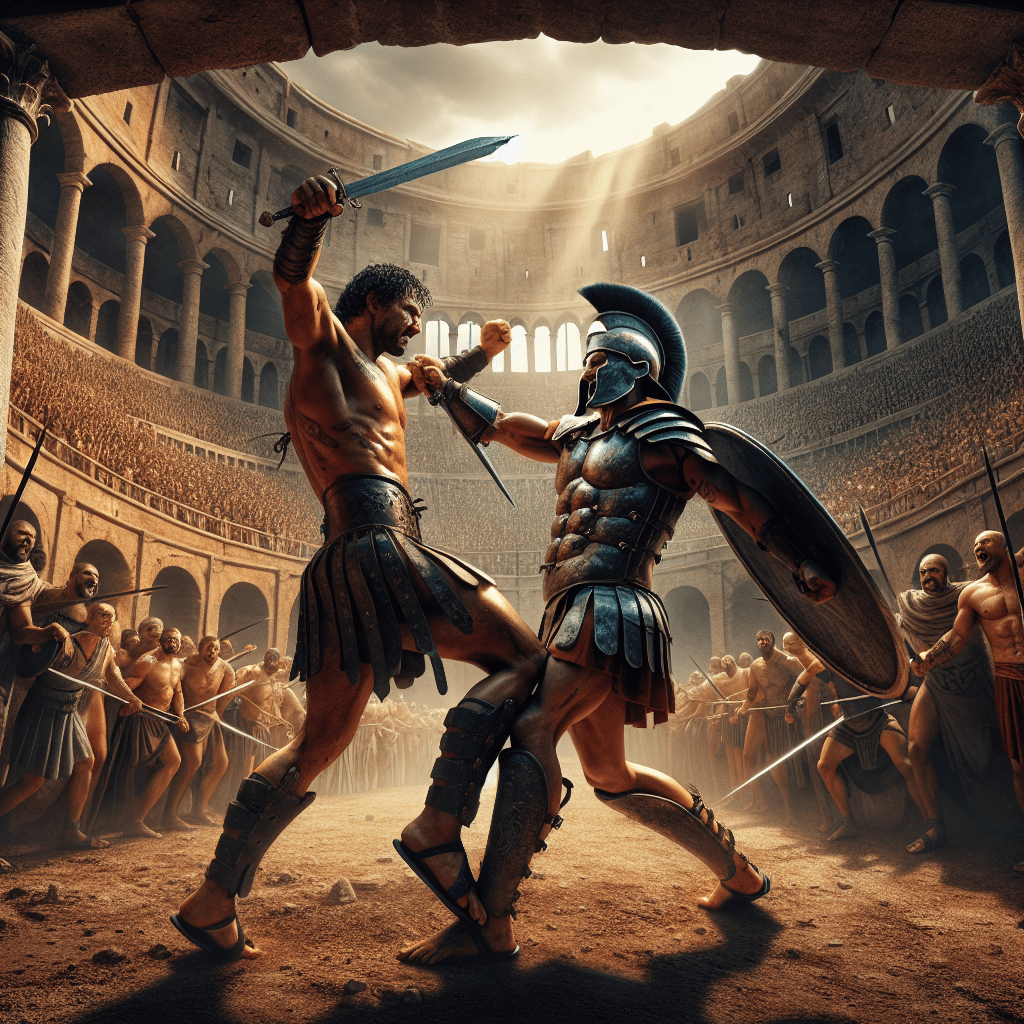Introduction to Gladiators
Gladiators were both heroic warriors and brutal fighters in the public mind, capable of creating spectacle and triumph while enduring the most severe hardships. The origins of these fighters and their unique place in Roman society might give us unique perspectives on the realities of military combat, tradition, and public amusement.
Gladiatorial combats transformed over the centuries from a death ritual at one powerful individual’s funeral to a critical element of Roman social, political, and military life. This transformation views the gladiator in a broader historical context and examines what the gladiatorial phenomenon may suggest about the dynamics of Roman civilization itself.
Origins and Development of the Gladiator Phenomenon
The origins of the gladiator games date back to the Etruscan civilization of Northern Italy. Initially, it was a ritual at funerals intended to pacify the spirits of the dead. Prisoner of wars and slaves were enlisted to fight to the death for the amusement of the spectators.
Over time, gladiatorial fights became increasingly popular in Rome. The tradition was adopted by Julius Caesar, who used it for his political advantage. Large scale games were organized to gain public favour. By the Roman Empire’s reign, gladiatorial games had become a significant part of Roman culture, held frequently in large amphitheaters such as the famous Colosseum.
The Role of Gladiators in Roman Society
Despite being among the lower and marginalized individuals in Roman society, gladiators held a unique position in Roman culture. They were feared for their prowess and the danger they posed, yet simultaneously admired for their courage, endurance, and willingness to face death.
Gladiator fights provided a channel for Romans to express and challenge societal values and concepts such as masculinity, bravery, and honor. These combats were microcosms of Roman militarism, reflecting the valor of the battlefield in the heart of the city.
Training, Life, and Death of a Gladiator
Potential gladiators, usually slave or prisoners of war, were sent to special training schools known as “ludi”. Here, they were drilled in particular fighting styles, weapon use, and fighting strategies under the watchful eyes of the “lanistae”, professional trainers who were often retired gladiators themselves.
Gladiators lived a disciplined, regimented life, characterized by intensive training and a high-protein diet. Despite this structure and the honour they were shown, gladiators were often seen as the lowest of the low in society, despised as much as they were admired.
In the arena, the life of a gladiator was brutal and short. They were often pitted against other gladiators or even wild animals. These fights rarely ended without bloodshed, and often culminated in the death of one or more participants.
Gladiators: Heroes or Slaves?
The dichotomy of the gladiator’s existence in Roman society makes them both a symbol of Roman power and a reminder of their societal failings. They were slaves and prisoners, subjugated through violence and bound by chains. Yet they were also brave warriors whose heroic exploits made them admired figures and often elevated their status.
Notes
– Gladiators were trained in special schools called “ludi”
– They followed a high-protein diet
– They were often seen as the lowest of the low in society, but also celebrated as heroes
– Julius Caesar leveraged gladiatorial games for his political advantage
– The first gladiatorial combats were part of funerary rituals
